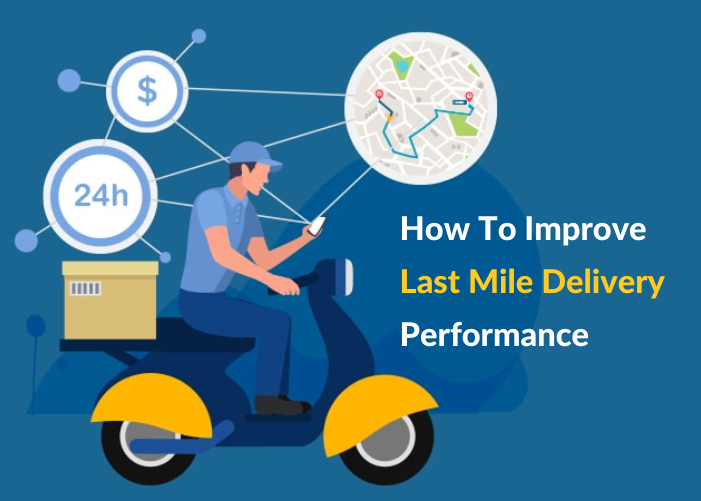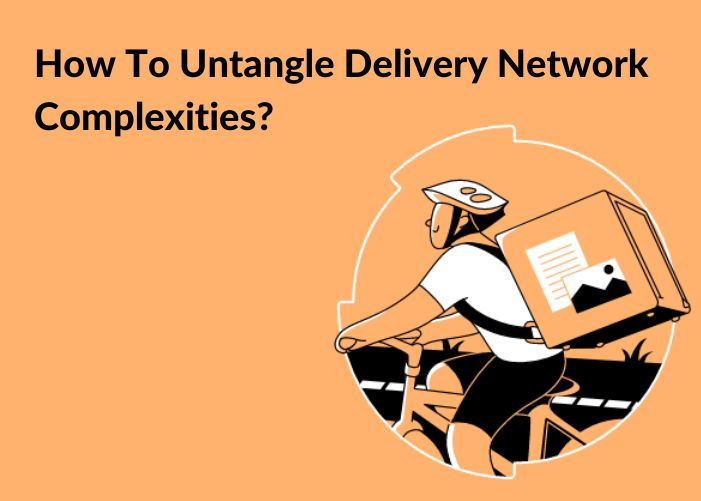1) Why is last-mile delivery so important in achieving customer satisfaction? Modern customers are a demanding lot! They are weaned on delivery services made popular by tech giants such as Amazon and Whole Foods. 24-hr delivery and Same-day delivery are now the new normal! Real-time delivery tracking and updates, flexible payment options, electronic signatures, and documentation – these are no longer premium or special services but the new threshold!
Customer satisfaction is the final metric that determines the success or failure of a business. And, since last-mile delivery is critical to achieving a satisfying order-fulfillment experience, companies must relentlessly focus on optimizing last-mile efficiency. A poor delivery experience will almost certainly result in a lost customer.
2) Key strategies for improving last-mile delivery and enhancing the customer experience: Modern logistics and delivery operations are complex functions that operate on a global scale. Without the use of modern last mile delivery software, it simply isn’t possible to manage this!
Let us look at key features (benefits) of such software that optimize last-mile performance and achieve customer satisfaction.
i) Automated route-optimization: The software is equipped with an advanced route-optimization and planning feature that automatically balances out all the boundary conditions, available resources, and constraints to come up with the most optimal routes. Given the complexity of modern logistics, this is really impossible to achieve manually. Some key variables include:
- Traffic conditions (congestion, bottlenecks, speeds, etc.)
- Weather and road conditions
- Distances to be traveled
- Available fleet vehicles and their capacity
- Available fleet drivers and their skills
- Delivery time-windows
- Available employee work hours, scheduled breaks
Logistics managers set their delivery goals, and the software balances out such resources and constraints to arrive at the most efficient routes and provide accurate customer ETAs. This is a forever dynamic process, and logistics teams also refer to historical data and use manual intervention as and when required.
ii) Complete transparency and visibility across last-mile operations: The experiential part of a shopping experience is always highly valued by the customer. It provides the ‘emotional’ part of a brand’s appeal, and over time, its equity. Just like touching, feeling, and smelling a product while purchasing products in-store, benefits like real-time tracking, live updates, and communication with delivery-drivers is a crucial part of the order-fulfillment process.
It provides customers with transparency and visibility into the delivery process, thereby making them feel that they are in control of their deliveries. This provides them with confidence, makes them feel involved, and creates a sense of feeling valued.
Today’s dispatch software allows customers to monitor their order progress right from the point of dispatch to the point of delivery. Additionally, any changes (e.g., delays due to weather) are communicated in real-time.
iii) Offering enough options to customers: Consumer surveys have consistently revealed that 50% of them rate choosing delivery windows for their parcels as topmost among their priorities.
Back in the day, customers really had just two delivery choices: Standard and Urgent! Modern conveniences like rescheduled deliveries or same-day deliveries were unheard of! But, led by the Ecommerce revolution, such options have now become the norm. Today’s customers demand the conveniences of delivery windows, various methods of payment, re-scheduling deliveries, changing destination addresses – well, the list goes on.
Today’s delivery software enables logistics managers to take into consideration all the variables mentioned above (and, then some) to arrive at the most feasible solutions for both, the customer and the logistics companies.
Importantly, the software sets realistic targets so that delivery drivers can maintain all protocols (driving safety, shift hours, adequate rest, etc.) and achieve delivery dates that meet customer expectations. Also, since customer-preferred delivery times are factored in, the chances of failed deliveries are greatly reduced. This improves the cost, and efficiency, of the entire delivery operation.
iv) Free shipping! Well, we all love a free deal, don’t we? For consumers, even with delivery charges falling as much as they have in recent years (consider Amazon Prime’s annual charge that entitles you to free shipping), the offer of “free shipping” is always a winning one!
Consumer surveys have consistently shown that 75% of consumers consider it an all-important factor when they are shopping online. Therefore, as a retailer, you must set yourself up to provide this option to your customers—it greatly increases your chance of attracting new customers and, thereon, the likelihood of creating lifelong customers.
~ For the modern customer, 2-3 day delivery is now the baseline, while 30% of customers now expect Same-day delivery ~
v) Personalize your customer communication: You only have to listen to customer feedback surveys to realize how important it is to make your customer feel like they are “kept in the loop” during the order fulfillment process. Nearly half of all consumers state that they want real-time updates, and are likely to switch brands if brands don’t make an effort to reach out with ‘personalized communications’.
Imagine this: “Hello Adam! Your parcel will reach you tomorrow between 2 pm and 2:30 pm. See you then!”
Such personalized messages across the last-mile delivery create a huge impact on your customers and go a long way in improving customer experience and, therefore, building customer loyalty.
vi) Reduced delivery times and alternative fulfillment models: With fast shipping becoming an ever-more important buying consideration for customers, it has necessitated the need for firms to maintain inventory stocks as close to customers as possible. Using modern delivery models such as self-pickups from designated locations and offline stores as micro-warehouses, companies can reduce order fulfillment times. Let’s look at some other popular options:
- Micro-fulfillment centers
- Pop-up distribution centers
- Curbside deliveries
- Hyperlocal deliveries
- Dark stores
vii) Using data analytics to understand consumer behavior:
It would be obvious to say that modern logistics and distribution management are centered on the use of automation, data, and advanced algorithms. Right from optimizing routes and delivery schedules to automated dispatch of drivers and parcels, the dispatch software of today is a powerful tool due to its algorithms.
Similarly, it also uses advanced AI-led data-analytical capabilities to study consumer behavior. You can figure out what your customers are doing (choosing), uncover their latent needs, and better serve them using data-driven insights.
Using modern last-mile software will indicate what your strengths and weaknesses are and identify your customers’ constantly evolving last-mile consumer expectations. With such actionable insight, you could minimize your inefficiencies, serve customers better, and deliver better on customer needs.
Conclusion: As is evident, company performance during last-mile delivery goes a long way in meeting customer expectations. Using all available means, including the latest tech tools like delivery software to maintain performance, is crucial.




